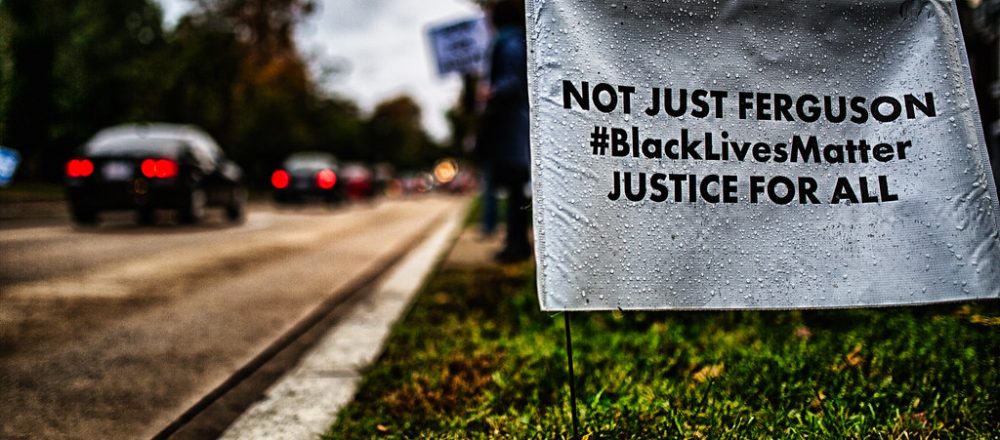In May of this year, African American man George Floyd’s last breath was taken as a crowd of helpless people watched in dismay. Floyd is one of many Black people who have been killed at the hands of a white police officer. As the world learns of police brutality in the US, Australians are too ready to ignore the deaths of Bla(c)k people (a distinct spelling referring to First Nations people) in their own country.
The last words of David Dungay Jr., five years earlier, were eerily similar to those of Floyd: “I can’t breathe, please! Let me up, please! I can’t breathe! I can’t breathe!” Dungay pleaded for his life in late 2015, as it was ripped away from him whilst under the care of Corrective Services NSW.
There are many similarities between these two men and how their deaths occurred. Dungay Jr and Floyd both died from ‘positional asphyxia’ (the aftermath of physical restraint that stops someone from breathing). The cause of death in both cases was also initially accounted for by pre-existing health conditions.
Following his death, videos and images of Floyd’s final moments circulated the internet. A private moment had now become a spectacle for the world to see, mirroring lynching that has historically taken place in the US. Lynching was used as a method for people to take justice into their own hands, specifically white people. This allowed white Americans to widen the racial divide.
Many assume lynching to be an American phenomenon while ignoring the mass murder of Aboriginal Tasmanians. Who is to say that the way Bla(c)k and Black individuals are being killed now is not just the 2020 version of lynching? Certainly, it is continuing to widen the racial divide.
After the murder of Floyd and the international Black Lives Matter (BLM) movement, Australia is facing a wakeup call — one that is long overdue. Too often, these complex issues are regarded as something that is far away, removed from the ‘quiet Australian’ and our way of life. Yet it has barely been a month since the last Indigenous death in custody.
The ‘Royal Commission into Aboriginal Deaths in Custody’ began in 1987 and finished in 1991. In 1992, the government promised $400 million to implement the Royal Commission’s recommendations. But between 1992 and today, there have been at least 441 Aboriginal people who have had their lives taken away from them while in police custody.
Since the famous 2008 apology to Aboriginal Australia, led by former Prime Minister Kevin Rudd, incarceration rates have more than doubled, and many other ‘Closing the Gap’ targets have still not been met. Australia is still failing First Nations people. Will that change now that the BLM movement has dominated headlines this year?
Keenan Mundine is the Co-Founder and Ambassador of Deadly Connections, a grass-roots organisation that specialises in helping and assisting First Nations People who are impacted by the justice system. Mundine is a First Nations man himself and, having dealt with the Australian justice system before, knows better than anyone how prominent these issues are, especially when it comes to Aboriginal communities in areas like Redfern and Waterloo. He believes that the Australian and American situations are quite similar, with a couple of key differences.
The main difference is where the deaths take place. In America, these killings are happening out in the streets, far too often with a crowd that is left with an immense amount of vicarious trauma. Here in our backyard, these events usually take place behind closed doors, more often than not, in prison cells.
America’s controversial and detrimental gun laws can be linked to the cause of various deaths of Black individuals. Mundine said that the inaccessibility of firearms in Australia does not change the police brutality that takes place, it just changes the methods.
“How can we make it so a prison sentence is not a death sentence?” Mundine asked, “the system needs to be fixed.”
Now that the BLM movement has found a voice in our country, many Australians are now asking what role they can play in achieving racial equality. Mundine said that although there are myriad ways to support First Nations People, the most important aspect of this work is to listen, amplify the voices of the people you are trying to help and support them in achieving change.
Mundine explained that the Black Lives Matter movement in Australia is not new, but has come to light of late as a result of how fast social media is growing:
“Society is becoming consciously aware of the impact of the issue of Black people losing their lives at the hands of the State … [people need to] challenge the negative stereotypes in your social circle, this could include calling out friends and family for their choice of language.”
Changing the media you consume can also be beneficial, Mundine said, “actively supporting more Indigenous media such as NITV helps.”
He added, “[people] need to be aware of how mainstream media can negatively represent the issues that First Nations People face.”
When asked about his personal experience with police brutality and what he has witnessed, Mundine was unable to answer, as these past events are something that constantly torments him. This is just another example of how these issues reach further than just those who are directly impacted. Simply witnessing a violent situation may leave an individual with lifelong trauma that is rarely treated.
However, Mundine was still hopeful, saying, “the biggest thing that should change is accountability, being responsible for someone’s well-being. People working in the justice system need to know that this ill-treatment is not okay, this is not working.”
He concluded, “the way to be supportive is to be as angry as the people who are affected by these issues. You can do this by bringing this topic up, placing responsibility on the people making the decisions, write to your local member and demand justice.”


